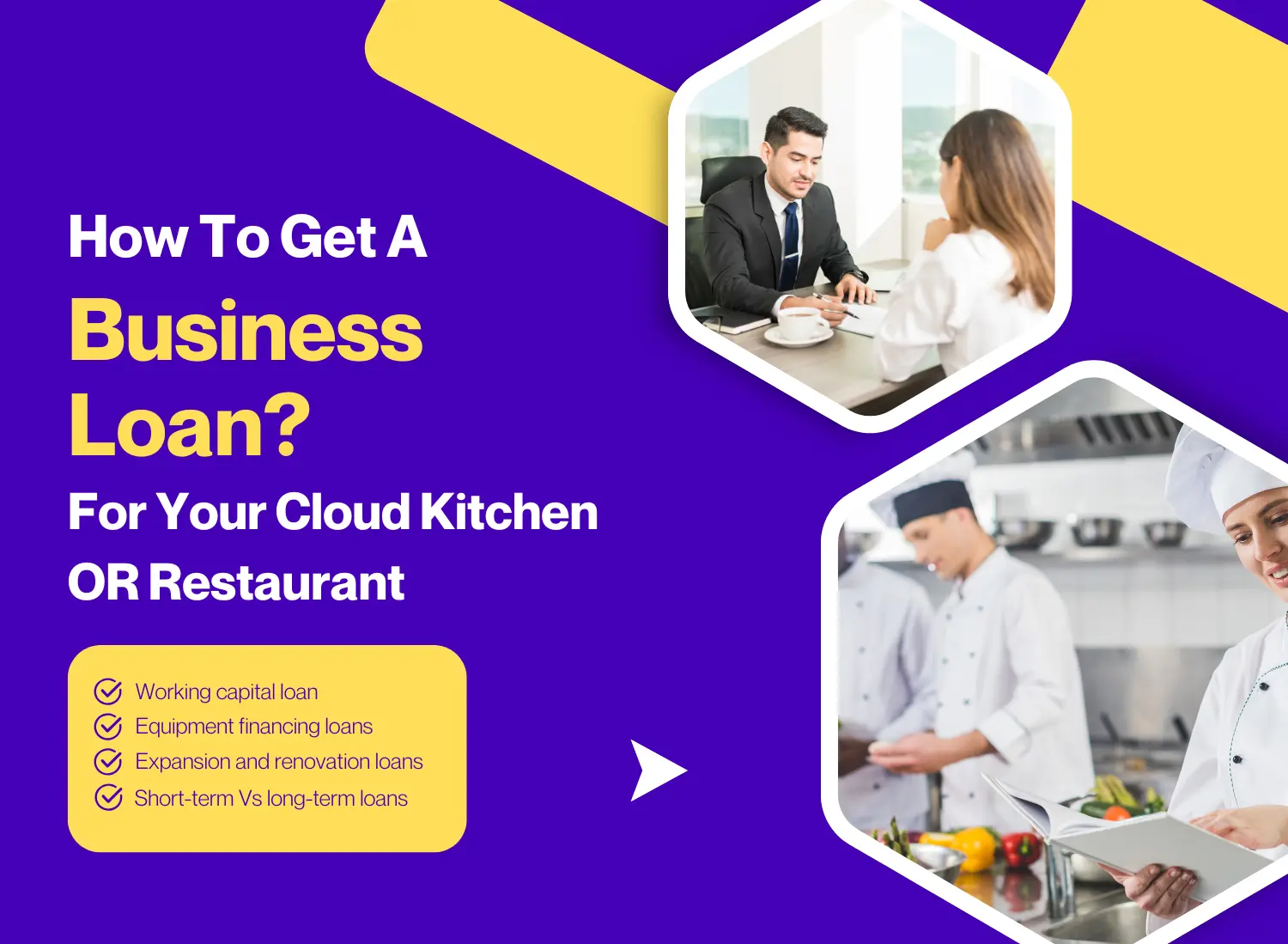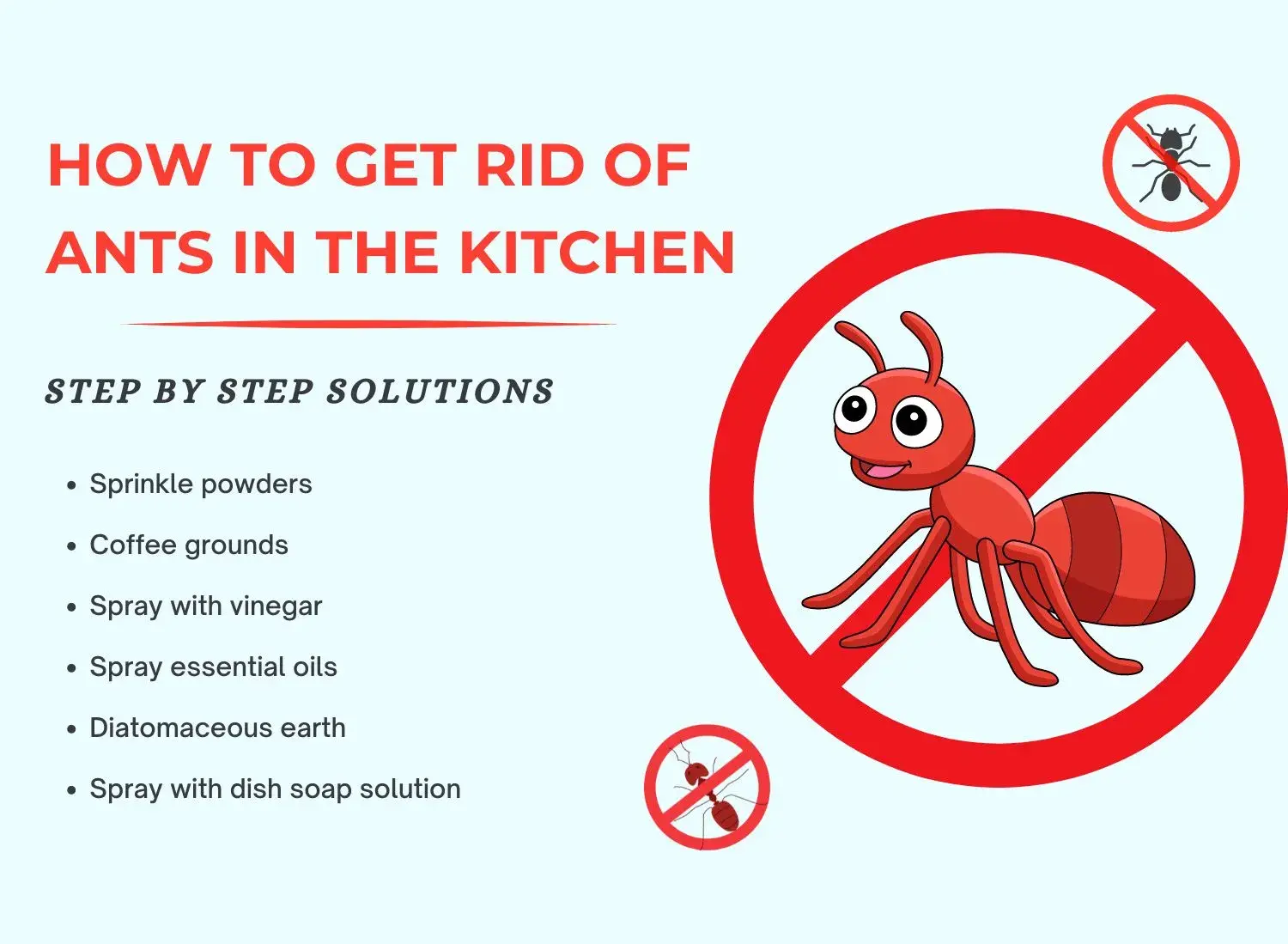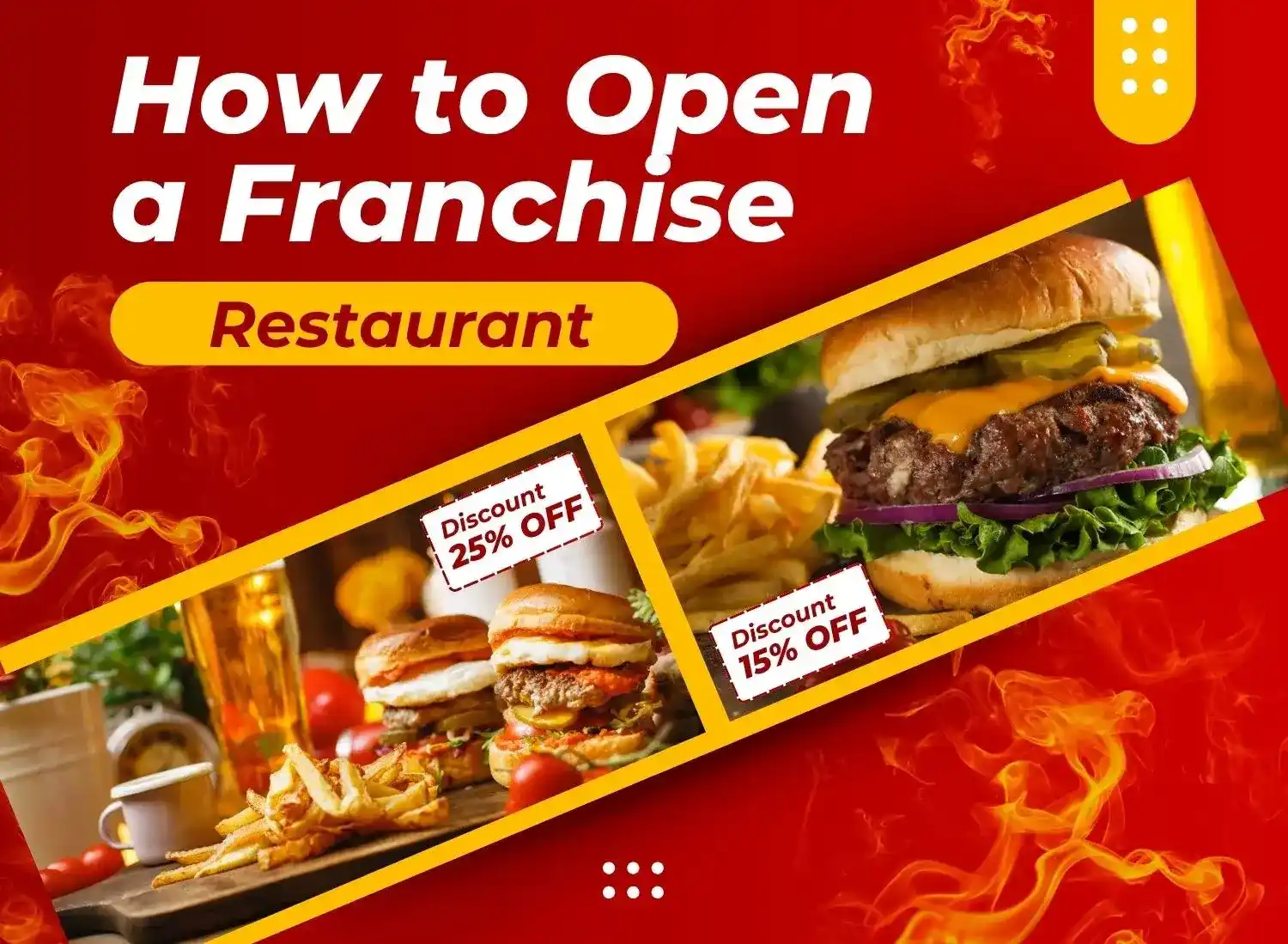“Hello Future Kitchenpreneur! Have you ever thought about how that delicious dish arrives at your doorstep without going to a restaurant? Because we’re living in the fantastic world of cloud kitchens, where the magic of flavors meets the ease of a click.
We are living in a world where time is running very fast, and people want everything quickly. That’s why a cloud kitchen is a quick solution in today’s time; cloud kitchens silently revolutionize the food industry.
After reading this guide, all your cloud kitchen setup related questions will be solved”.🚀
Understanding the Dynamics of Cloud Kitchens: Business Models, Costs, and Growth Strategies
In recent years online food ordering has become a trend among people, so many food entrepreneurs are turning their businesses into cloud kitchens. Cloud Kitchen is an ideal online food business that delivers food to your doorstep. Moreover, amidst COVID, cloud kitchen has gained immense popularity due to its innovative way of food preparation and delivery.
The cloud kitchen business is becoming a trend for both entrepreneurs and customers, as they are very easy to set up and require less investment as well as serve food anywhere anytime for the customers. In addition, there is a great role of food delivery platforms in the success of cloud kitchens as both work parallelly helping each other.
Moreover, online delivery platforms act as a connecting link between customers and cloud kitchen owners as there is no traditional dine-in or takeaway service in the cloud kitchen business. Thus, in this guide we cover detailed information on the cloud kitchen, its business models, how one can set up a cloud kitchen in India, cloud kitchen setup cost, and the pros or cons of a cloud kitchen.
What is a Cloud Kitchen?
A cloud kitchen or ghost kitchen is a virtual kitchen without any physical location or dine-in space. Cloud Kitchen prepares its food in Central Kitchen, takes orders online, and delivers through various delivery platforms such as Zomato, Swiggy, blinkit, Uber Eats, and others. Moreover, they are growing massively in urban areas as they require very little space and little investment, so it’s an ideal business solution for young entrepreneurs who want to try in the food business. Also, you can start a cloud kitchen on zomato direct from your home kitchen.
Benefits Of Cloud Kitchen
Cloud kitchen is a revolutionary introduction in the food business which is spreading rapidly all across the world. Moreover, there are multiple benefits of having a cloud which is the reason behind its success. It includes:-
- More focus on food quality – Traditional restaurants require a series of processes to be taken care of such as table management, interiors, servicing, furniture, and many more. Thus, it divides your attention from the cooking process and food quality. However, it’s not the case in a cloud kitchen, you can solely focus on the food quality as there is no need to divert to other things. Thus, cloud kitchen business allows full focus on the cooking process, and its delivery, thus enhancing customer experience.
- Less operational investment – Running a restaurant requires heavy investment and the majority of investment goes into the location cost. However, cloud kitchens are very economical as there is no need for investment in location or real estate. Moreover, this is a low rental business model that requires less operational cost than traditional restaurants.
- Higher profit margins- Running a cloud kitchen is very affordable as only delivery cost needs to be accounted for. Moreover, the operational and rental costs are easily covered in the margin. Thus, Cloud Kitchen gives you a higher profit margin than the traditional restaurant. In addition, you can even offer competitive prices in the market and check their response.
- Easy to expand – Cloud kitchen reaches the customer base more rapidly and cloud kitchen setup cost is much less, so it is easy to expand and start multiple outlets in different locations in the city making the customer reachability better.
- Build multiple brands – Cloud kitchen allows running multiple brands in the same Kitchen that serves different cuisines. In this way, you can run multiple brands with less investment making a higher profit.
Characteristics Of Cloud Kitchen
Cloud kitchens have been the fastest-growing food business in recent years and now everyone is trying to invest and expand their business. Moreover, the following characteristics make Cloud Kitchen different from any other food business. It includes:-
- No traditional dine-in space – A cloud kitchen or dark kitchen is not physically available, so there is no requirement for a dine-in space. It allows business entrepreneurs to operate in small and cost-effective spaces.
- Online Presence – Cloud Kitchen connects with its customers through online delivery platforms so it needs to have a strong online presence to grow its market.
- Optimized operations – Cloud Kitchen uses different advanced technologies and optimizes its operational process to get efficient and cost-effective productivity.
- Multiple Brands- Cloud kitchen maximizes kitchen utilization by starting multiple brands in one Kitchen.
How Does A Cloud Kitchen Function ?
Cloud kitchens are very simple to start and grow with little resources. Moreover, there are very few things you need to take care of to give wings to your cloud business. However, to succeed in the business, you need to understand how the cloud kitchen functions and scales up for better profit.
Operational Process
A few operational processes are important to make your cloud kitchen successful in less time. It includes:
- Menu design – The menu design is important as it is the face of any cloud kitchen. The menu represents your business to the customers. Moreover, as there is no physical menu, Cloud Kitchen presents an innovative menu and can customise it at any time based on customer feedback and insights.
- Data analytics – Cloud kitchen strategically devices menu items, their prices, and operational efficiency.
Customer Interaction Process
Customer interaction is very important for any business to grow and make its position in the market. Moreover, Cloud Kitchen is solely an online business, so all the customer interaction will occur digitally. In addition, there are two major ways cloud kitchens can interact with their customers. It includes:
- Online delivery platforms – Cloud kitchen functions through delivery platforms and apps. So, it becomes important for Cloud Kitchen to make a strong online presence in front of customers. They interact through feedback and reach a large number of customers.
- Engages through digital channels – Other than delivery platforms, Cloud Kitchen uses multiple online digital channels for marketing and engaging with customers.
Scalability Process
Once the cloud kitchen starts, it’s important to adapt and scale up in the market growing its customer base. Moreover, Cloud Kitchen quickly adapts to the trends and customer preferences as there are no physical constraints. They adapt to any new cuisine or dishes that are liked by customers. In addition, Cloud Kitchen works with a customer-centric approach making it easy to scale and expand the business without any need for a physical presence.
Technology And Equipment Used In Cloud Kitchen Business
Cloud kitchen functions online, hence technology is the backbone of the business. Moreover, technology makes cloud kitchens more efficient and grows at a faster pace. There are a few technologies that every cloud kitchen uses to make its presence strong. It includes:
Order Management System
OSM or order management system is the technology that streamlines the process of receiving orders from the customer and delivering the food at their location. Moreover, the efficient order management system enhances the operational speed and customer experience.
POS Integration
Point of sale is important for the better functioning of your cloud kitchen. It integrates with Cloud Kitchen and improves the order processing functions along with real-time updates. Moreover, the POS system helps to track orders, keep customer records, manage payments, and track inventory and sales data.
Kitchen Display System
KDS or kitchen display system is the advanced technology that shows all the data directly to the kitchen staff. It helps to organize food preparation effectively and timely without wasting time in conveying data from manager to staff. Moreover, KDS helps to lower any errors during the order preparation and makes communication better between the kitchen and the delivery partner.
Ai Data Analysis
AI is making every operation easy and smooth in every field. Moreover, In a cloud kitchen, AI helps to analyze the profit and optimizes the menu as per the preferences of customers. Moreover, analyzing the data gives an overview of customer response towards the cloud kitchen and thus, helps to make strategies for profitable business.
Online Delivery Platforms And Apps
Online delivery apps are the only way cloud kitchen functions. So, user-friendly online delivery apps are important to process the order and deliver the food. Moreover, these apps help to engage the customer in your cloud kitchen by offering discounts, promotions, and loyalty programs, and take care of their experiences.
What Are The Different Types Of Cloud Kitchen Business Models ?
Cloud kitchen demand is rising exponentially in the market where more and more restaurant owners are turning their businesses into cloud kitchens. Moreover, there are different types of cloud kitchen models available in the market to invest in and start your own cloud kitchen business.
Shared Cloud Kitchen Model
In this type of business model, Cloud kitchen owners rent a commercial kitchen space operating multiple businesses under one roof. It is a low investment business model appropriate for all enterprises.
Independent Cloud Kitchen Model
It is a simple cloud kitchen business requiring less investment, best for startups, small businesses, and those who want to start their cloud kitchen from home.
Single Brand Cloud Kitchen Model
This type of cloud kitchen model consists of a single brand and allows multiple cloud kitchens to open under one brand. In this, cloud kitchen owners use multiple kitchens at different locations to prepare orders more efficiently and effectively.
Multiple Brand Cloud Kitchen Model
This type of cloud kitchen consists of multiple brands allowing to work under one roof in one kitchen making different cuisines. This model helps to generate more revenue and reach a broader customer base.
Aggregator Cloud Kitchen Model
This type of model consists of different types of restaurants collaborating and preparing different food items. Moreover, in this business model, the cloud kitchen owner doesn’t need to own any kitchen. All they need to do is charge the restaurant kitchen owner a fee for using the cloud kitchen platform to sell their food items. In this model, the business owner needs to handle the order delivery.
How To Set Up A Cloud Kitchen Business ?
If you want to start your own food business, then there is nothing better than a cloud kitchen. It offers higher profit at low investment making it the most popular business in today’s time. Moreover, if you want to set up a cloud kitchen, then you need to go through a series of processes. It includes:
Market Research And Analysis
Market research is very crucial if you want to start any business. It’s important to know in which market you are going to invest. Moreover, research is necessary to know your target customers, their needs and preferences, competitors, and their way of marketing. Once you have completed market research, you need to evaluate and analyze your business budget.
Make A Business Plan
Planning is important before investing in business as it gives the right direction. Planning a business means making a blueprint answering what you are going to start, what you are going to achieve, and how you are going to achieve. Moreover, a business plan is not only for the individual to carry out business, but also to show your bank or partner your idea of business. In addition, a business plan will include the following things:
- Which type of cloud kitchen are you going to start?
- How you are going to invest in the business?
- What will be your marketing strategy?
- What will be your budget plan?
- What will be the cuisine?
Select The Right Location
Location plays a vital role in the success of any business. However, there is no need for dine-in space, so you can save your money by finding a location with only kitchen space. Moreover, there are a few things you must consider before choosing the location. It includes:
- The location must be close to the residential area so that food delivery doesn’t take much time.
- There should unlimited water and electricity supply
- There should be proper hygiene
- Lighting should be adequate
Get All The Cloud Kitchen Business And Registration
Registration and certifications are important for the smooth functioning of your cloud kitchen business. You need to register your business to legally run and grow your business. Moreover, after registering your business, it becomes important to get all the permits and licenses. To start the registration process, it’s important to choose which type of business you are going to start. It includes private LTD companies, limited liability partnerships, one-person companies, and many others.
Moreover, once you get through the registration process, you need to get all the permits and licenses to run the business. There are several licenses you need to get from the government. It includes
- Food and safety licence
- No objection certificate
- Health and hygiene
- Fire safety licence
- GST registration
- FSSAI license
Design A Menu
The menu is the face of any cloud kitchen as it represents the business online to the customers. Moreover, design a menu which attracts the customer and chooses the food items according to customer preferences. Keep the menu as per the market research and keep updating the menu looking at the customer feedback.
Get The Raw Materials And Equipment
The next step to set up the cloud kitchen is to get the required raw materials and equipment. Moreover, there are a few essential equipment that you must have to start your cloud kitchen business. It includes:
- Cooking counters and utensils
- Food storage containers
- Commercial refrigerator
- Oven
- Stove
In addition, you need to get basic raw materials for your cuisine. However, it’s smart to get ingredients in small quantities at first, and then restock when the demand rises.
Hire Staffs
Although you don’t need a large number of staff like in a restaurant business. However, you need a chef and a few staff to prepare and pack the food order. Moreover, choosing the right staff is very important as they play a major role in the success of your business. So, you must hire a well-experienced chef who knows all about the cuisine you want to serve in your cloud kitchen. In addition, if you want to find a good chef, then cooking academies are a very good option.
Set Up Your Online Food Ordering System
As your cloud kitchen functions online, it is essential to have a good online food ordering system. A good online food ordering system enhances your business and helps to make it successful saving you time and money. Moreover, it’s important to partner with popular delivery systems such as Zomato, Swiggy, Uber Eats, and others. The food delivery system helps the customer to check the menu, order food, and process the payment seamlessly. In addition, an online food delivery system receives orders and delivers food to the customer’s address.
Marketing Your Cloud Kitchen Business
Marketing is very essential to make your new business familiar and reach its heights. You need to promote your business and let people know more about your business. Moreover, there are various marketing strategies that you can use to promote and market your cloud kitchen business.
- Create a social media handle on popular platforms such as Facebook, Instagram, and Twitter to engage with the target customers.
- Choose a catchy name and tagline for your cloud kitchen that reflects your business and attracts the target customers.
- You can start an email campaign to reach more customers effectively.
- Offer free dishes and coupons that will effectively increase the number of customers and boost sales.
- Distribute pamphlets in the locality to make your cloud kitchen a known name for the customers.
- Offer discounts, promotions, and bonuses on food items for your customers.
- Upload creative images of your dishes
Cloud Kitchen Setup Cost In India
Starting a cloud kitchen requires a deep understanding of the cost and investment to set up the business. Moreover, the setup cost depends on various factors such as the type of cuisine you want to serve, technology, delivery system, location, and many more. In addition, to calculate the setup cost, it’s also important to understand the market and business trends. The setup cost includes:
Location
Choosing the right location is essential for success. However, you don’t need to spend much on location as there is no need for a dine-in space. This way, you can save or reduce costs. Moreover, if you are renting a space in metro cities, then a 300-600 sq ft area will cost Rs 20,000 to Rs 50,000 with security delivery of Rs 1,00000 to 200000.
Machinery And Kitchen Equipment
Kitchen equipment is essential to start a cloud kitchen. Food preparation will be ineffective and inefficient without proper machinery and kitchen equipment. Moreover, first, you need to purchase basic equipment such as a Chinese burner, cooking counter, utensils, and others that will cost around Rs 60,000 to 70,000. In addition, if you want machinery for pizza or bakeries, then you need to purchase an oven that costs around Rs 12,000 or more depending upon the brand and quality. However, if you want to save some money, then you can go for second-hand equipment and machinery.
License And Registration
To start and run your business smoothly, you must get your registration done and get all the required licenses. Moreover, getting the license and registration will cost you some.
- Fire safety license and NOC- As there is a danger of fire in the kitchen, so it’s mandatory to obtain a No Objection Certificate from the fire and safety department which will cost you around Rs 1000.
- FSSAI license – It is a mandatory license for every food business ensuring safety and hygienic standards. Moreover, to obtain this license, you need to pay Rs 2000.
- Electricity connection – Electricity is important to start any food business. So, secure an electricity connection with the security of Rs 20,000.
- Gas connection – To start a cloud kitchen, you must secure a gas connection along with certain security measures costing you around Rs 5000.
- Trademark – To make your brand identity, you need to register to secure your trademark and logo. It will cost you around Rs 6000.
- Trade license – To legalize your cloud kitchen, it is important to get a trade license costing you around Rs 1000.
Moreover, in the complete process of obtaining a license and registration, you will need a cost of around Rs 40,000.
Raw Material Costing
Efficiently purchasing raw materials is important for the effective functioning of a cloud kitchen. Initially, you need to get less raw materials of around Rs 20,000 and then you can increase your capacity of raw materials as your business succeeds.
Marketing cost
Marketing is an integral part of any business as it helps to gain more and more customization enhancing sales. Moreover, choosing smart digital marketing plans and strategies is crucial as cloud kitchens mainly depend on online customers. Thus, digital marketing for your cloud kitchen in India will cost you around Rs 30,000 to Rs 80,000.
Packaging Cost
Packaging enhances the branding of your cloud kitchen business and makes dining experiences even better. Moreover, the packaging material requires containers, stickers, and sachets of different items. It may cost you around Rs 40,000 to Rs 60,000. However, the pricing may depend on the quantity and quality of packaging materials you want for your business. In addition, it’s very crucial to have well-packaged food delivery as it not only impresses the customer but significantly impacts your business.
Cloud Kitchen Popularity Country Wise
Cloud kitchens have witnessed global popularity, with several countries embracing this innovative kitchen trend. The table below outlines the prevalence of cloud kitchens in selected countries based on key metrics.
| Country | No. of Cloud Kitchens | Market Size (USD Billion) | Key Players |
| United States | 7,500 | 15.2 | Kitchen United, Cloud Kitchens |
| India | 3,000 | 2.5 | Rebel Foods, Box8 |
| China | 6,200 | 9.8 | Panda Selected, Meituan-Dianping |
| United Kingdom | 1,800 | 3.6 | Deliveroo Editions, Karma Cans |
| Brazil | 2,500 | 1.7 | iFood, Rappi, SpoonRocket |
| UAE | 900 | 1.1 | Kitopi, Deliveroo Editions |
Data is approximate and subject to change based on industry dynamics.
The United States leads in both the number of cloud kitchens and market size, reflecting a mature and well-established cloud kitchen ecosystem. India, with its rapidly growing food delivery market, has a substantial presence, while countries like China and the United Kingdom are also significant players in the global cloud kitchen landscape.
This table provides a snapshot of the widespread adoption of cloud kitchens across diverse geographical locations.
Pros And Cons Of Cloud Kitchen Business
If you want to invest in a cloud kitchen business, then you must focus on the pros and cons list to make the right decision. Moreover, here are the pros and cons of starting a cloud kitchen business.
Pros Of Cloud Kitchen Business
Cloud kitchen comes with many benefits which makes it the most rapidly growing business in India. Some of the pros are:
- Low cost: Cloud kitchen can be started with minimal investment as it doesn’t require traditional restaurant dine-in space and operational procedures. Thus, it saves a lot of your money making it a low-cost investment business.
- Menu-focused business: Cloud Kitchen doesn’t need to divert its attention from different traditional restaurant operations, so it can focus on the menu innovatively offering the best quality food.
- Less ongoing cost- Unlike traditional restaurants, Cloud Kitchen is more accessible for your entrepreneurs as it has a low barrier for ongoing cost.
- High profit- As the operational cost is low, Cloud Kitchen is more prone to make profits.
Cons of Cloud Kitchen
With many benefits, there are a few cons to starting up a cloud kitchen in India. It includes:
- Less customer interaction – Cloud Kitchen is an online business and depends solely on digital presence to engage with customers. Moreover, the absence of physical interaction makes it difficult to communicate with customers and grow rapidly.
- High competition – As the cloud kitchen is becoming a popular business in the food industry, there is a lot more competition as compared to other food businesses.
Conclusion
Cloud kitchen is the fastest-growing food business which is trending in India. Amidst COVID, online food ordering is very common, and understanding the demand, there was the introduction of Cloud Kitchen which is an online food restaurant.
Moreover, a cloud kitchen or ghost kitchen is a virtual kitchen with no physical outlet and receives orders via an online food delivery system. If you are a budding entrepreneur and want to start something of your own with less investment then, a cloud kitchen business is the best option. Cloud Kitchen in collaboration with popular delivery partners like Zomato, Uber Eats, Swiggy, and others is a high-profit margin business where you can get maximum output in minimum input.
In addition, Cloud Kitchen makes it possible to sell multiple brands under one roof. If you are new to cloud kitchen and have no idea how to start a cloud kitchen, then here is a comprehensive guide on cloud kitchen India setup cost and steps. Furthermore, there is a summarized pros and cons list of starting a cloud kitchen helping you to analyze whether or not you should invest your time and money.










